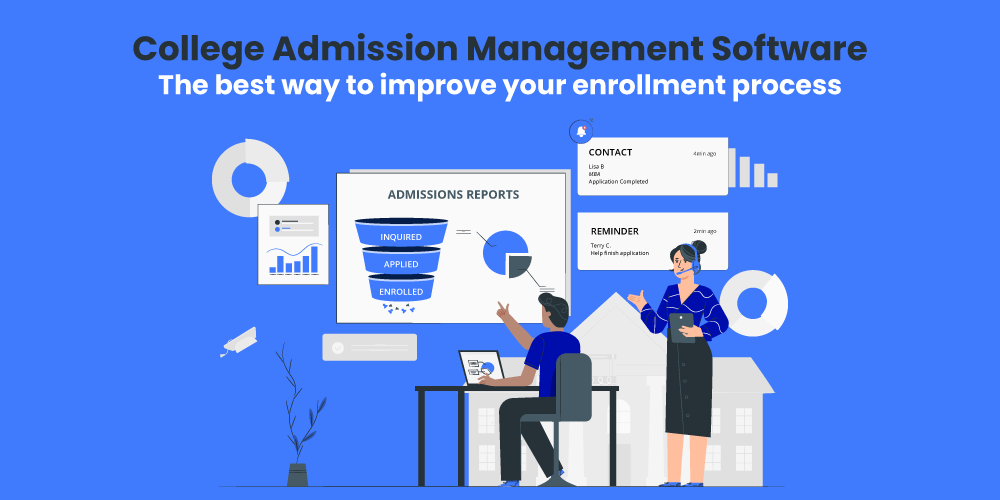
I’m not too fond of all-you-can-eat-buffets. There is so much to choose from, and 9/10 times, I fill up on starters and miss out on the main course. It is overwhelming and mind-numbing.
Fun fact, buffets are incredibly profitable. But, since you are here, I am assuming you are looking at ways to improve your enrollment process. We will dive straight into it, but before that, do you know what is common between an admissions and enrollment process and the buffet? Being so occupied with starters (junk student inquiries) that you miss out on the main course (conversion-ready-student-inquiries). Similar to a buffet, there are hundreds of lead-gen sources and thousands of student inquiries.
Having streamlined the admissions for multiple educational businesses, we understand that new enrollments are primary for any institution. While we talk about “streamlining” the admission process, it is crucial to understand the student journey.
Let’s look at how college admission management software helps you achieve higher enrollment rates by tracking every interaction and enabling communications across touchpoints. We’ll also look at the functional requirements of an online admission system.
Why should you streamline your admission process? And why do you need a college admissions software for that?
Admission is not a one-person job. It involves student counselors, marketers, finance, management, IT, and more. The tricky part is – each department operates in its way, with its specific tools and techniques. It often leads to people and processes working in silos and results in miscommunications and missed opportunities.
Therefore, schools and colleges need admissions software that helps streamline different departments and helps institutions break through the silos for a better enrollment workflow.
A college admission management software, or an admissions CRM, can help you connect teams, processes, and leads that eventually results in better student experience and higher enrollments.
What is Admission Management Software?
Admission management software is a comprehensive suite of products designed to simplify, streamline, and manage the entire admissions process for higher education institutions. Imagine it as a well-oiled machine that ensures every cog in the admissions wheel turns smoothly.
This software is specifically built to improve the accuracy, efficiency, and effectiveness of each stakeholder involved in the process, including prospective students, admissions officers, and faculty members.
By leveraging advanced technology, admission management software enables institutions to automate administrative tasks, minimize paperwork, and ensure data accuracy, ultimately enhancing the overall applicant experience. Think of it as a digital assistant that handles the heavy lifting, allowing your team to focus on what truly matters – engaging with and enrolling the best-fit students.
Benefits of Using Admission Management Software in Higher Education Institutions
Implementing admission management software in higher education institutions offers numerous benefits that can transform the admissions process. Here are some key advantages:
- Improved Efficiency and Productivity: By automating repetitive tasks, the software frees up valuable time for your admissions team, allowing them to focus on more strategic activities.
- Enhanced Applicant Experience: Personalized communication and timely updates make prospective students feel valued and informed throughout the admissions process.
- Increased Accuracy and Reduced Errors: Automated data entry and management reduce the risk of human error, ensuring that all information is accurate and up-to-date.
- Better Decision-Making: Data analytics and insights provide a clear picture of the admissions landscape, helping institutions make informed decisions.
- Improved Communication: A unified communication suite ensures that prospective students receive timely updates and important information, building trust and engagement.
- Enhanced Brand Reputation: A smooth and efficient admissions process reflects well on the institution, enhancing its reputation and competitiveness in the market.
- Scalability and Flexibility: The software can adapt to changing admission requirements and processes, ensuring that institutions are always prepared for the future.
Functional Requirements of Online Admission System
1. Lead capture for prospective students
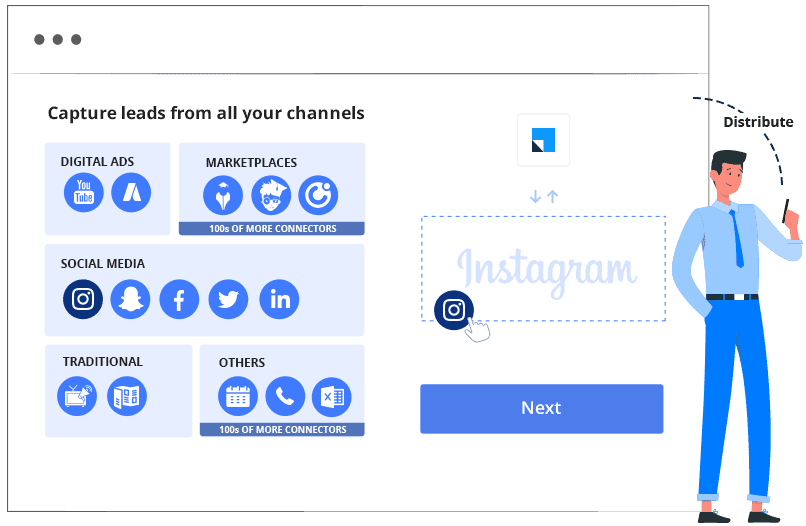
We’ve all seen action hero movies where the bad guys surround the hero during a fight, and the hero single-handedly defeats them. Too bad this stuff doesn’t happen in reality. The same goes for your student management. Not that the student inquiries are irrelevant. But when you have a massive inflow of leads, your system will most likely take a beating. It will lead to missed follow-ups and lost opportunities.
Think of your admission process like a bustling coffee shop during morning rush hour – dozens of orders coming in simultaneously from multiple channels: mobile app, walk-ins, drive-through, and delivery services. Without a systematic way to capture and organize these orders, chaos ensues, customers get frustrated, and business suffers. Similarly, educational institutions need a sophisticated enrollment software to handle the constant stream of inquiries flowing in from various channels, ensuring no potential student falls through the cracks.
But, with the help of a robust lead capture system in place, be sure to capture leads from sources like social media channels, publisher panels, online/offline ads, inbound calls, landing pages, and more. But let this not fool you. Efficient lead capture is just the tip of the iceberg when it comes to improving your enrollment process.
2. Lead segmentation
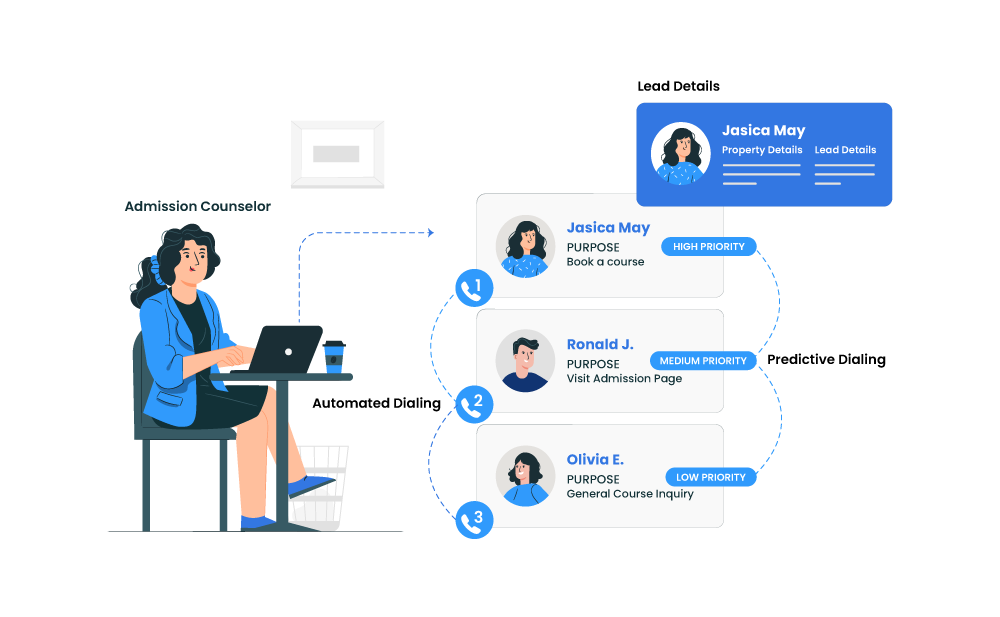
It’s a common misbelief that admission is all about generating as many leads as possible, then contacting all of them, resulting in a 100% conversion rate. Well, to an extent, it is true. However, we haven’t addressed the real problem yet.
Why don’t we see a 100% conversion rate on the 100 leads that are generated? It is practically impossible to call all leads one by one. You might have junk leads, inquiries that have lost interest or have turned cold. Hence, it is essential to know your target audience (the applicant), understand their intent, collect real-time interaction info through website visits, webinars attended, time spent on marketing content, and accordingly establish engaging touchpoints with the applicants.
Converting a student inquiry to enrollment is a game of lead qualification and strategic audience targeting. Unfortunately, most of the time, admission teams ignore this. An admissions CRM or college admissions software can solve this major roadblock by helping you identify the conversion-ready leads. It lets you assign scores based on engagement, such as website visits and email opens, and their eligibility for admission. So, the next time you see a student with a higher scorecard, that’s your target.
3. Lead distribution
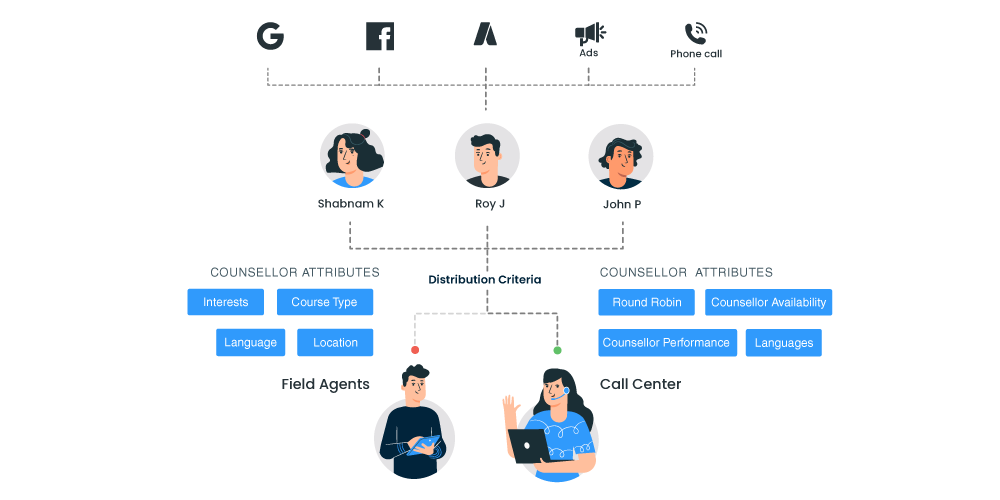
Note that your Ideal Customer Profile (ICP) shouldn’t be a guessing game.
If you’ve defined your customer persona, you’ll know that less than half of the inquiries you generate will fit your ICP.
The idea is simple. Pursue those leads first who fit your ICP because they are eligible and probably are willing to enroll students in your courses.
But before everything else, ask yourself:
- Do you call them one-by-one based on the lead score?
- Do you distribute these leads among your admissions team based on criteria, such as course interested, language spoken, location, and counselor availability?
If you’re following up with leads on a first-come-first-serve basis, you’re missing those leads that have higher chances of conversion. Similarly, if you’re assigning every lead to a counselor, and if they are not available on a particular day, response to inquiries will only get delayed.
That is why you need a college admission management software that can help you identify and prioritize conversion-ready leads.
Distributing the leads among your admission counselors by understanding the intent will give you an upper hand in establishing meaningful content. Also, if you have different counselors for different courses, mapping course inquiries based on the counselor’s expertise and then assigning them will make more sense.
4. Curate touchpoints
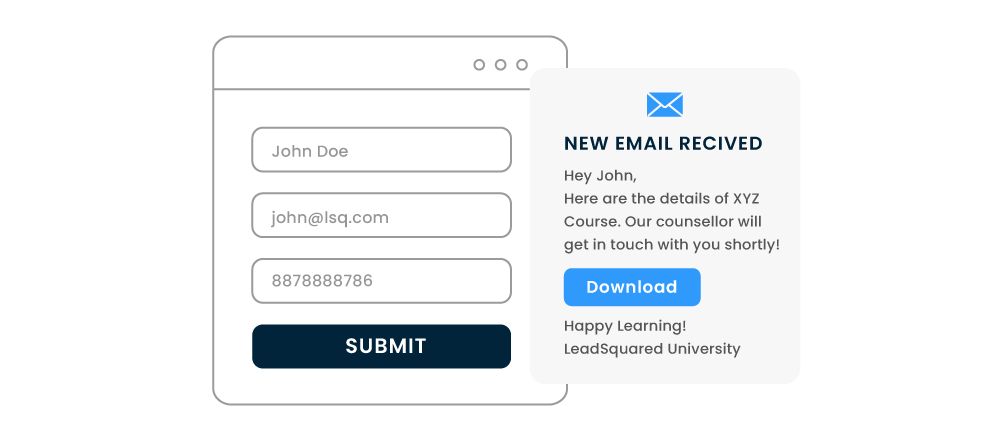
Calling every lead is not a practical solution. Let me explain this to you with an example. You are looking to purchase a new cell phone. In a massive market with multiple brands such as Apple, Samsung, Google, One+, and a hundred more, you are spoilt with choice. You individually visit their websites and do a price vs. feature comparison. Although you are a prospect for all these organizations, you will not purchase from all of them. Moreover, you won’t want sales agents calling you and nudging you to purchase from them. Instead, retargeting ads, personalized emails, SMS, or WhatsApp can nudge gently and retain your interest in their products.
Similarly, if students visit your website or go through the placements page, you can send mails elaborating the points that might interest them rather than calling them one by one and repeating the same info. An admission CRM helps you capture touchpoints that interest a student and helps you frame an email and send it out in no time, providing a comprehensive solution for student engagement. You can also create landing pages based on student queries and the keywords that they most actively search. Email marketing proves to be very beneficial to educational institutions to engage prospective students. According to Data & Marketing Association (DMA), for every 1$ spent on email marketing, the average ROI is 44$.
5. Student engagement workflows
Different institutions follow a different set of steps in the recruitment process. So, there is no one way to improve admissions. However, you can define workflows to keep a student engaged with your institution. It could a simple event invite, campus tour, counseling session, or more.
For example, as soon as you capture a student inquiry, you should have a multistep touchpoint in place. For instance, how many emails go and at what intervals, when should you call, what emails to send students based on their actions. The admission CRM streamlines this process and helps you create engaging workflows for applicants and prospective students, ultimately enhancing your enrollment processes.
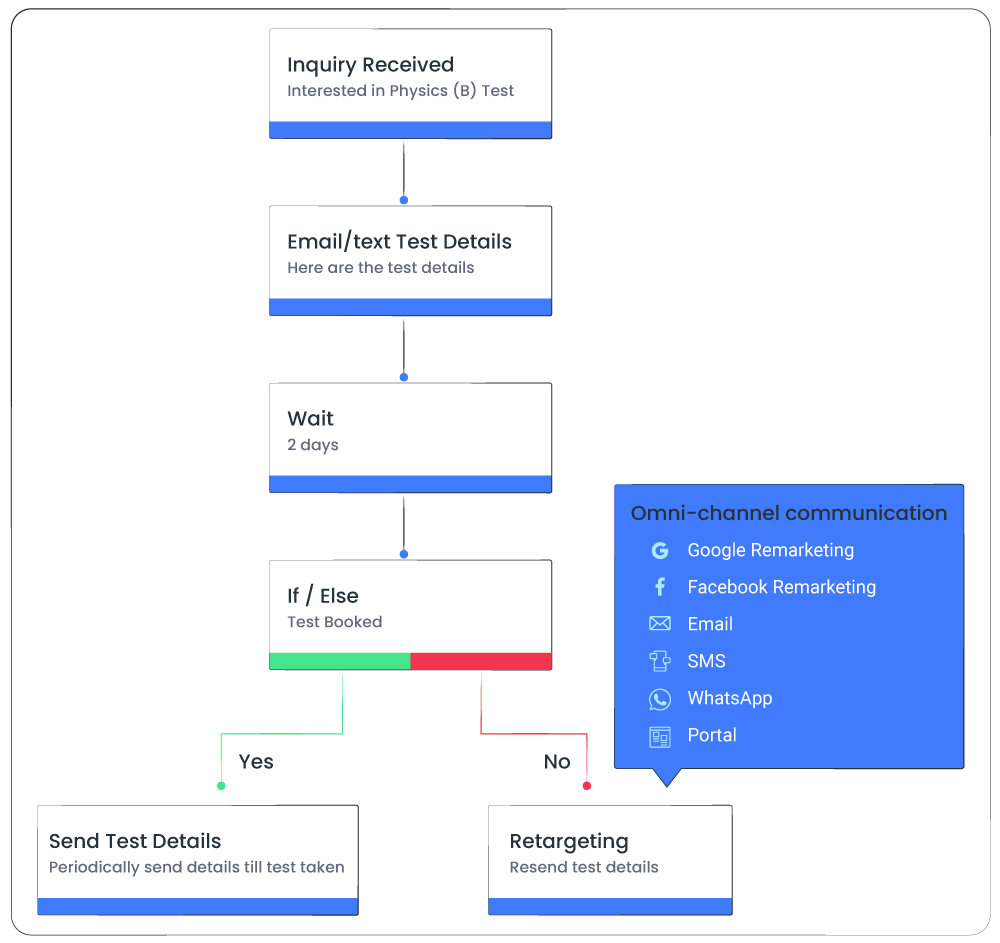
6. Mobile-friendly Website or Portal
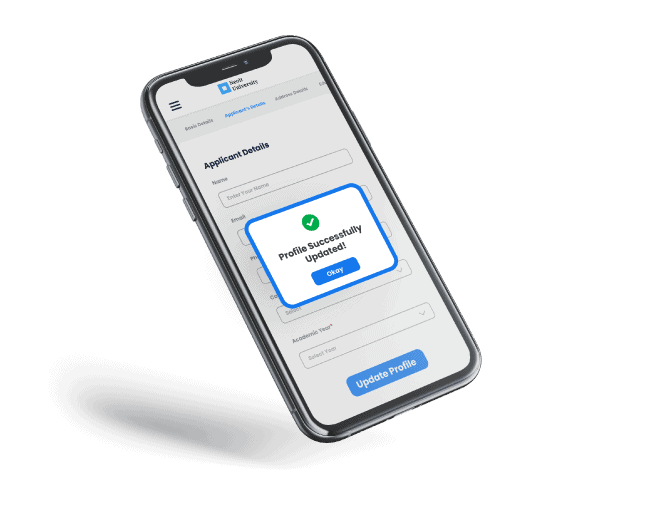
Gen Z and millennials spend most of their time on their cell phones. Whether it’s looking for information or networking on social media, they use smartphones for almost everything. That is why it is crucial to have a mobile responsive website and admission portal, which can be effectively managed using school management software. It should work as a go-to option to find admissions-related information and let students apply and check their admission status.
In reality, many students drop off without completing the application for numerous reasons. In such instances, CRM software helps nudge students to complete their application and, at the same time, notifies the admission reps to follow up with students – if they don’t complete the application.
7. Portals
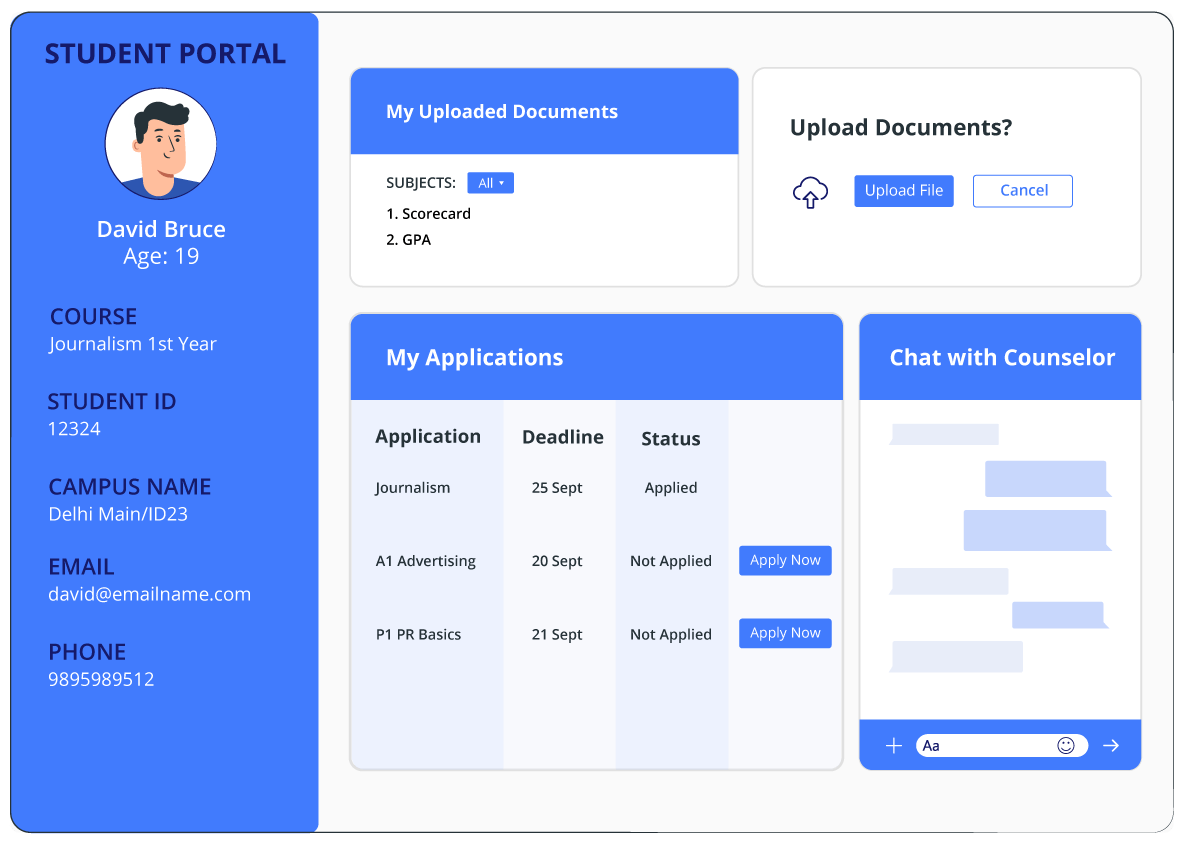
Student admissions and admission portals are essential to drive student enrollment. Portals serve two-fold benefits.
- Students can apply online, access their profiles, upload documents, and track the status of their applications.
- Admission counselors can track the applications and stages of all students in the admission funnel. Plus, they can gather all the important information through a single dashboard. They can check completed, in process, and pending applications. They will also be able to see application payments and how many are yet to pay.
8. Call-center Integration
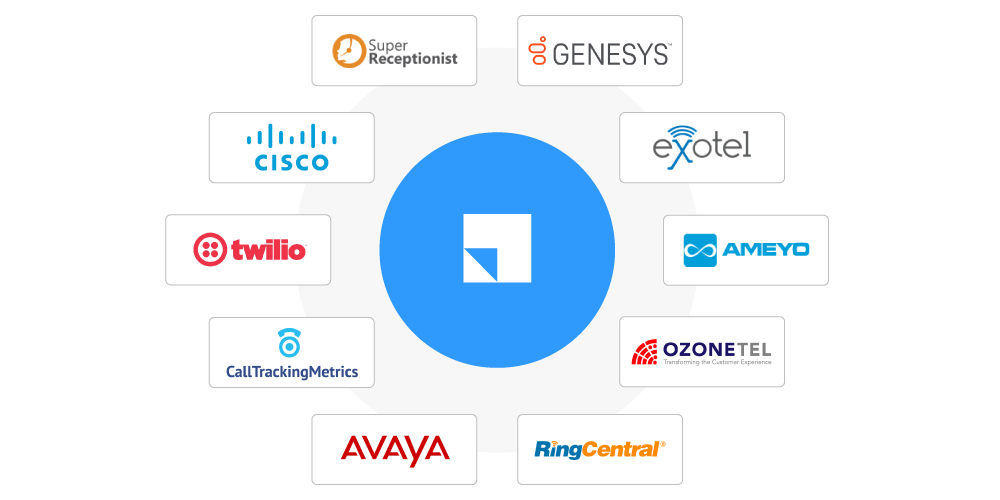
Many institutions that get a large number of inquiries every day outsource follow-ups to call centers. In such cases, the schools or colleges often lose the context and could not understand why their admissions funnel is not yielding enrollments. That is why they need a unified solution to handle all admission-related tasks.
The admission CRM integrates with telephony services, captures all inquiries and routes them to various admission agents based on many attributes, and ensures all student queries are resolved in no time. They will also be able to see application payments and how many are yet to pay, ensuring that tuition payments are managed efficiently.
I hope this helps you understand the basic functional requirements of an online admission system.
Few Ways to Enhance Applicant Experience with Admission Management Software
High-volume application processing and management
Higher education institutions often receive a large volume of applications from diverse regions and countries. Managing and processing these applications can be a daunting task, stretching the entire admissions process and overwhelming admissions teams.
Institutions can leverage advanced admission management software to streamline and optimize the admissions workflow. By automating administrative processes, institutions can enhance productivity, ensure prompt decision-making, and attract the best talent while providing a seamless applicant experience. This not only reduces the burden on admissions teams but also ensures that no promising applicant is overlooked.
Meeting modern applicant expectations and personalization
Modern-day applicants expect a seamless and personalized admission process. To meet these expectations, higher education institutions must adopt digital transformation and implement a comprehensive admission management software solution.
Think of it as offering a concierge service to prospective students – a user-friendly online portal and mobile app that cater to their individual needs and preferences. By providing such personalized experiences, institutions can enhance the applicant experience and set themselves apart in the competitive landscape. This approach not only meets the high expectations of today’s tech-savvy students but also demonstrates the institution’s commitment to innovation and excellence.
Improving communication with prospective students
Effective communication is critical in the admissions process, and admission management software can play a vital role in enhancing communication with prospective students.
Institutions can automate and personalize email campaigns, SMS notifications, and dedicated applicant portals. This ensures timely updates on application status, important deadlines, and upcoming events, ultimately improving the overall applicant experience and building trust with prospective students. Clear, consistent communication helps prospective students feel connected and informed, making them more likely to choose your institution.
Conclusion
These are a few admission signals which individually and collectively are necessary to boost enrollments but are often ignored. An admission CRM makes the application process convenient for admission teams as well as students. It provides transparency to applicants, and the admission team can gain visibility in the enrollment funnel. With admissions season around the corner, you may want to ramp up your lead-to-enrollment rates and reduce student turnaround time. The single best way to improve your lead-to-enrollment ratio is made possible by combining these important admission parameters into a power-packed admissions CRM. For instance, the Blackbaud Enrollment Management System offers a tailored solution for private schools and higher education institutions, integrating various functionalities to streamline the admissions and enrollment process.
The Admission CRM helps maintain and manage new admissions and aids in managing enrolled students, alumni services, placements, and beyond. If you are looking to increase your institution’s inquiry-to-enrollment rate, check out LeadSquared
FAQs
You can improve the admission process only by setting a benchmark on admission-related KPIs. It includes the performance of admission agents, publisher panels, lead source, marketing campaigns, and more. You can also use an admission CRM to make the application process convenient for admission reps and students.
A CRM or admission management system, as known in the education industry, is vital to drive enrollments in an organized manner. A CRM streamlines the admission process by mapping the inquiry-to-enrollment journey. It helps with lead capture, lead distribution, tracks interactions, automates marketing and email campaigns, and more to accelerate enrollment.








